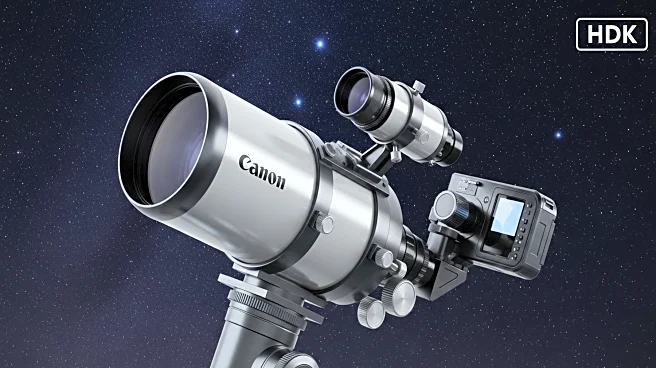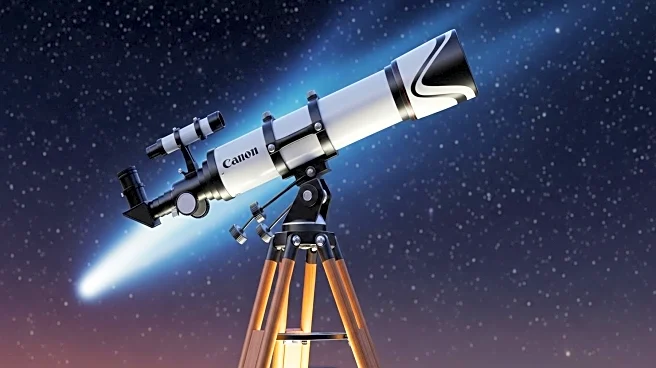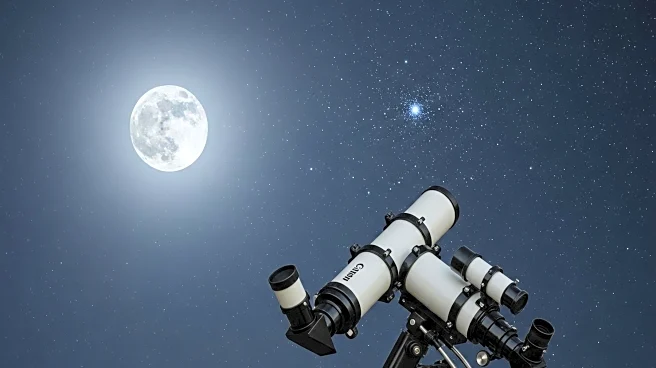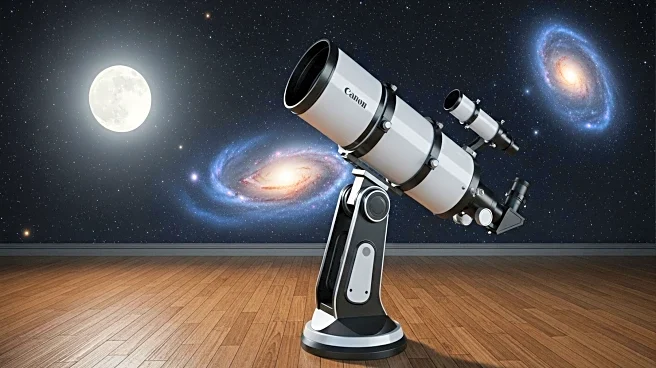What's Happening?
ZWO has launched the Seestar S30, a compact and affordable imaging system designed for amateur astronomers. The Seestar S30 is equipped with a 30mm f/5 apochromatic triplet lens and features internal motors for precise tracking and automated slewing to targets. It includes a dual-band filter for imaging emission nebulae and a built-in rechargeable lithium battery that allows up to six hours of continuous use. The telescope is designed to be user-friendly, with an app that provides a star atlas, object catalog, and imaging controls. The app also offers scheduling features, transforming the S30 into a mini robotic observatory.
Why It's Important?
The introduction of the Seestar S30 by ZWO represents a significant advancement in making astrophotography more accessible to amateur astronomers. Its affordability and ease of use could encourage more individuals to engage in astronomy, potentially increasing interest and participation in the field. The telescope's compact design and intelligent app make it suitable for travel and remote observations, broadening the scope of astronomical exploration for hobbyists. This development may also stimulate competition in the smart telescope market, driving innovation and further reducing costs.
What's Next?
As the Seestar S30 gains popularity, it is likely that ZWO will continue to refine its app and telescope features based on user feedback. The company may also explore additional models or accessories to complement the S30, enhancing its capabilities. The broader astronomy community may see increased collaboration and sharing of images captured with the S30, fostering a more connected and engaged community of amateur astronomers.
Beyond the Headlines
The Seestar S30's integration of AI denoising technology highlights the growing role of artificial intelligence in enhancing image quality in consumer products. This trend could lead to further advancements in AI applications across various fields, including photography and videography. Additionally, the telescope's ability to operate autonomously during imaging sessions reflects a shift towards automation in personal technology, which could influence future product designs in other sectors.










